

Nutritionix. Nutritional Info: Nuts, acorns, raw. Fats and Fatty Acids The chart below shows good fats in Nuts, acorns, raw in relation to bad fats.
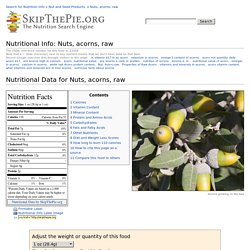
Read more about each type of fat and fatty acid below. Polyunsaturated Fats: Polyunsaturated fat can be found mostly in nuts, seeds, fish, algae, leafy greens, and krill. Whole food sources are always best, as processing and heating may damage polyunsaturated fats. Monounsaturated Fats: Foods containing monounsaturated fats reduce LDL (bad) cholesterol, while possibly increasing HDL (good) cholesterol. Trans Fatty Acids: The National Academy of Sciences has concluded there is no safe level of trans fat consumption. Saturated Fats: Consumption of saturated fat is a risk factor for cardiovascular disease in the view of the Canadian Heart and Stroke Foundation, the American Heart Association, the British Heart Foundation, the National Heart Foundation of Australia, the National Heart Foundation of New Zealand and the World Heart Federation. Nutrition Facts and Analysis for Snacks, beef jerky, chopped and formed.
Naming Carboxylic Acids : Names of Carboxylic Acid Compounds : Organic Chemistry. (Chemical) Definition of Carboxylic Acids: Names of Carboxylic Acids in General Carboxylic Acids are named according to the same system as other organic compounds, with the suffix -oic acid used to indicate that both a carbonyl group and a hydroxyl group are both attached to the same carbon atom, which is located at the end of a chain or branch of carbon atoms forming the molecule (except in the case of methanoic acid, which includes only one carbon atom).
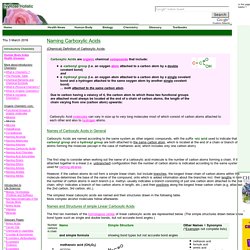
The first step to consider when working out the name of a carboxylic acid molecule is the number of carbon atoms forming a chain. If they are attached together in a linear (i.e. unbranched) configuration then the number of carbon atoms is indicated according to the same system as used for naming alkanes. The simplest linear caboxylic acids are named and their structures drawn in the following table. N09_WhatAreTheTypesOfFat.pdf. Legumes, grains and other seeds in human evolution. HEALTH, NUTRITION; THEORY > THE EVOLUTIONARILY APPROPRIATE DIET > GRAINS, LEGUMES, and OTHER SEEDS OF ANNUAL PLANTS OIL Natural food-Grains Beans and SeedsThe Natural Food Hub - www.naturalhub.comWe approve of linking to specific pages.

Feel free to link to this page. Kidney Beans. Human Biological Adaptability: Nutritional Adaptation. Human Ancestors Were Nearly All Vegetarians. How Fat Cells Work" A little more than half of the adults in the United States are overweight.
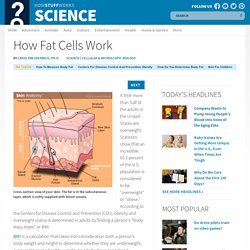
Statistics show that an incredible 65.2 percent of the U.S. population is considered to be "overweight" or "obese. " According to the Centers for Disease Control and Prevention (CDC), obesity and overweight status is determined in adults by finding a person's "Body Mass Index" or BMI. BMI is a calculation that takes into consideration both a person's body weight and height to determine whether they are underweight, overweight or at a healthy weight. An adult who is considered "overweight" has a BMI somewhere between 25 and 29.9. An adult with a BMI of at least 30 is considered "obese. " Whether due to concern for related health risks (high blood pressure, heart disease, diabetes, sleep apnea, respiratory problems, etc.), or just for sheer aesthetics, many Americans worry about fat. Fat, or adipose tissue, is found in several places in your body. How Cells Obtain Energy from Food - Molecular Biology of the Cell - NCBI Bookshelf.
HHMI - Molecular Structure of Fat. Hands-on Activities for Teaching Biology to High School or Middle School Students. By Drs.

Ingrid Waldron and Jennifer Doherty, University of Pennsylvania The expression "hands-on, minds-on" summarizes the philosophy we have incorporated in these activities - namely, that students will learn best if they are actively engaged and if their activities are closely linked to understanding important biological concepts. Some of our activities are explicitly aligned with the Next Generation Science Standards, as indicated by (NGSS) in the descriptions below and the links to the right.
Additional information is provided in Summary Tables and in the Teacher Preparation Notes for these activities. In the months to come we will publish additional activities that are aligned with the Next Generation Science Standards. FNDDS. Energy Sources for Prolonged Exercise. Dietary Fats: MedlinePlus. Condensation and hydrolysis. Chocolate Milk Improves Recovery and Athletic Performance? Chocolate Milk Improves Recovery and Athletic Performance?
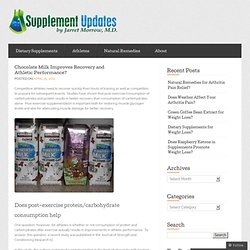
Chemical Composition of Human Biology. Articles in the Biological Literacy series are fun explorations of how the human body works.

See below for a complete listing of articles in the series. An ugly bag of mostly water. Let’s go a little deeper than that, though. Biomolecules (Updated) BioGems. An animation that explains how a bean gets digested. [VIDEO] Amino acids: MedlinePlus Medical Encyclopedia. Amino acids are organic compounds that combine to form proteins.

Amino acids and proteins are the building blocks of life. When proteins are digested or broken down, amino acids are left. The human body uses amino acids to make proteins to help the body: Break down foodGrowRepair body tissuePerform many other body functions Amino acids can also be used as a source of energy by the body. Activation energy: Kickstarting chemical reactions - Vance Kite. Enzymes: You heard a little about Sam and his team of MODS, but what is an enzyme and what is its role in a chemical reaction?
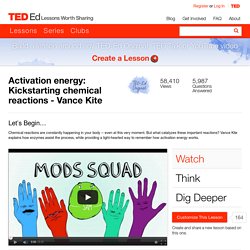
Find out more about enzymes through this video lecture and this online learning module Enzyme Catalyzed Reactions: Most of us learn best by doing. Each of these virtual labs will help you to understand different factors that can affect the activity of enzymes. A New Way of Looking at Proteins, Fats and Carbohydrates. Topics Discussion Introduction Most traditional discussions of macronutrients - carbohydrates, fats, proteins - revolve around the issue of quantity, either as the gram amount of these molecules necessary per day, or as the percentage of the diet that they should each contribute.
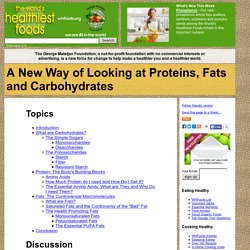
While this is an important issue to consider, when it comes to these essential nutrients, quantity should not be the only concern.